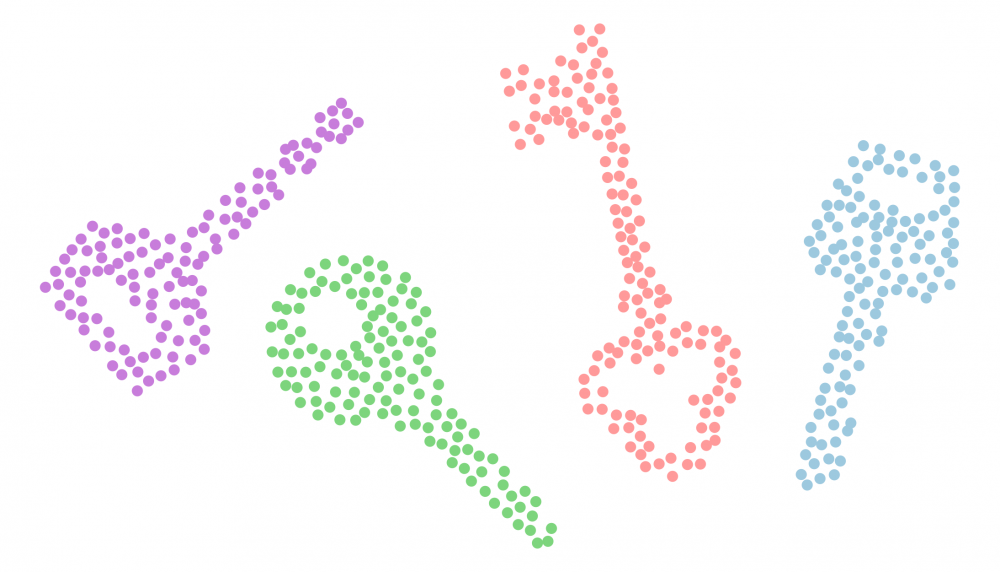Planning A Single-Cell RNA-Seq Project: Keys To Success
Single-cell sequencing technologies have become essential tools for researchers aiming to understand the roles of individual cells within complex tissues and entire organisms. The value of single-cell data is maximized when the experiment is carefully planned and executed. In this guide, we present key tips and strategies to help ensure the success of your single-cell RNA-sequencing project. We cover experiment planning, laboratory work, data analysis, and data interpretation.

Design, Plan and Anticipate
Every successful project starts with a solid plan—and for single-cell projects, good planning can help you avoid common pitfalls (more on that in an upcoming post). Even if your project has an exploratory aspect, it’s important to begin with well-defined research questions to guide decision-making throughout the process:
- What is your organism? Some assays use probes that target specific transcriptomes, such as those of human or mouse.
- What is your tissue? Storage requirements vary depending on tissue type—fresh, frozen, or FFPE preservation—which in turn affects the types of single-cell technologies you can use.
- What type of cells are you studying? Different cell types present unique challenges in terms of isolation, handling, and sequencing depth (e.g., immune cell enrichment or gentle dissociation for neurons).
- What type of single-cell data do you need? Single-cell RNA-sequencing is the most commonly used of single-cell sequencing methods, but if you're interested in gene regulation, you might consider single-cell ATAC-seq or multimodal single-cell sequencing.
- Are you interested in splicing events? If so, you should opt for full-transcript or long-read sequencing approaches.
Next, ensure your experimental design—including the number of replicates—adequately supports testing your hypotheses. As a general rule, the more complex your biological system and intended analyses, the more cells you'll need. If you're targeting a rare cell population, you'll need to analyze a higher number of cells to ensure reliable detection. When comparing groups, aim for at least three biological replicates per group. These should be three distinct biological samples—not the same sample processed multiple times, which would constitute technical replicates.
Minimize confounding factors and batch effects as much as possible. These unwanted sources of variation can obscure real biological signals. To reduce their impact, process all samples using the same protocols, reagents, and equipment whenever feasible. Also, randomize the processing order (and include technical replicates, if possible) to prevent the confounding of biological and technical variation. For instance, if your “disease” and “healthy control” samples are processed in separate batches, it becomes impossible to disentangle batch effects from true biological differences.
It’s also very helpful to estimate a realistic timeline for your project, taking into account the duration of the experimental work, data analysis, and result interpretation. Computational steps can be particularly time-consuming—especially the preprocessing phase (e.g., going from sequencing data to a per-cell gene count matrix). Some downstream work, like RNA velocity analysis, regulatory network inference, or dataset integration can also be intensive.
Finally, try to anticipate potential delays and build contingencies into your plan. Consider backups for samples or libraries in case of wet lab failures, supporting datasets in case your sample sizes fall short, buffer time in your deadlines to absorb delays, and—importantly—a reliable team that can step in to troubleshoot when needed.
Make the Most Out of Your Lab Work
You likely already know the essentials of working in a lab: maintaining sterility, handling samples and reagents carefully, minimizing processing time, and ensuring precision during sample and library preparation to promote reproducibility.
Beyond these basics, it's crucial to document everything you do and observe throughout your experiments. Mistakes can happen—this doesn’t mean your experiment is ruined. Keeping detailed lab notes helps you troubleshoot and trace issues later. You never know what detail might prove valuable down the line.
- Think you may have swapped two samples? No problem—note it clearly and plan to verify with your data later.
- Had trouble dissociating a tissue? This might indicate a tough or fibrotic tissue, which could lead to lower cell yields or more fragmented cells.
- Noticed reduced starting material or smaller libraries for a sample? This might be due to sample quality, but it could also reflect biological factors—some tissues naturally have fewer cells or cells of different sizes.
- See better libraries from one condition than another? Biological differences between conditions may influence cell viability or susceptibility to dissociation and sequencing. This variation could itself be biologically meaningful.
If you encounter major issues or can't determine why things aren't going as expected, you may need to repeat the experiment. However, before starting over, check whether you can salvage the work—especially given the significant time, money, and effort involved.
Check Your Data – and Squeeze It (Gently)
While we won’t dive deep into bioinformatics in this post, it’s crucial to ensure your data and analysis are trustworthy. Strive to balance the raw data with biological knowledge—connect the two. Data quality should be assessed not only through standard metrics but also by confirming that your cells express the expected marker genes. If something looks off, don’t be too quick to discard it. Unexpected results don’t always indicate a problem—you might be looking at the discovery of the year.
For single-cell sequencing data, a solid basic analysis typically includes:
- Alignment and count matrix generation
- Ambient RNA removal
- Doublet detection
- Normalization
- Dimensionality reduction
- Clustering and cell-type annotation
- Integration and batch correction (as needed)
At every stage, be on the lookout for unexpected sources of variation, such as technical noise or batch effects. Ensure your results are robust, reproducible, and well-documented. Always record the tools and software versions you use so the analysis can be exactly replicated if needed.
Respect your data. If your experiment was thoughtfully planned and your computational QC doesn’t raise red flags, keep an open mind—especially when the data looks strange. Question it. Squeeze it, shake it, flip it upside down, come back to it later, ask a colleague to look at it too, rethink your assumptions—but don’t torture the data.
Once you have your single-cell dataset, your project doesn’t have to be confined to it. There are many public databases and datasets across organisms, tissues, and conditions that you can leverage to enhance your analysis. One common use of public datasets is for cell-type annotation, where existing annotations help identify the cell types in your dataset—saving considerable time. However, remember that public datasets may vary in quality and documentation, and analyzing them can sometimes be more challenging than working with your own data.
Single-cell sequencing comes with almost limitless options for experimental approaches, tools, and analyses. Stay informed about new developments—this field evolves rapidly. Webinars, social media, and blogs (like ours!) are excellent resources if you don’t have time to constantly scan the literature. (Stay tuned for a more detailed post on novel single-cell analysis approaches.)
Sometimes, incorporating a new analytical method can reveal novel insights and give your project the spark it needs to impress colleagues—or reviewers.
Draw Meaningful Conclusions
At Genevia Technologies, we love bioinformatics—but we’re also realistic. Computational analysis can produce far more results than a human can meaningfully interpret. That’s why the interpretation phase is key, especially if you have a great bioinformatics team supporting you.
Keep your research question front and center. Revisit it often. How do your findings relate to your scientific goal? Do they support your hypothesis? Are they consistent with existing literature?
A well-structured results organization will also save you time and confusion. You can group results by analysis type, cell population, or condition—whichever best suits your project. This organization helps streamline interpretation and manuscript writing. When inspiration strikes, you'll know exactly where to find the relevant data. While it may take extra time for your bioinformaticians to carefully document and structure results, it pays off—especially when revisiting the project later.
The format and visualization of your results can dramatically affect their interpretation. A summary of cell counts may be more useful than an exhaustive list of all cells by cell type. A violin plot might reveal more than a dot plot. Most figures benefit from refinement—removing clutter, simplifying or resizing labels, and using thoughtful color schemes to clearly communicate the key message. Start by describing the meaningful patterns you observe in a figure, then remove any visual elements that don’t contribute. That said, never hide important findings, even if they’re messy or unexpected. A "clear" message is not always a “clean” message!
Finally, share your interpretations with everyone involved in the project: lab members, bioinformaticians, collaborators. Each perspective adds depth to the analysis and helps create a more complete and accurate story. That collaboration often leads to success—however you choose to define it.
Learn more about the researchers we have helped to succeed in their single-cell projects.
Contact us
Leave your email address here with a brief description of your needs, and we will contact you to get things moving forward!

